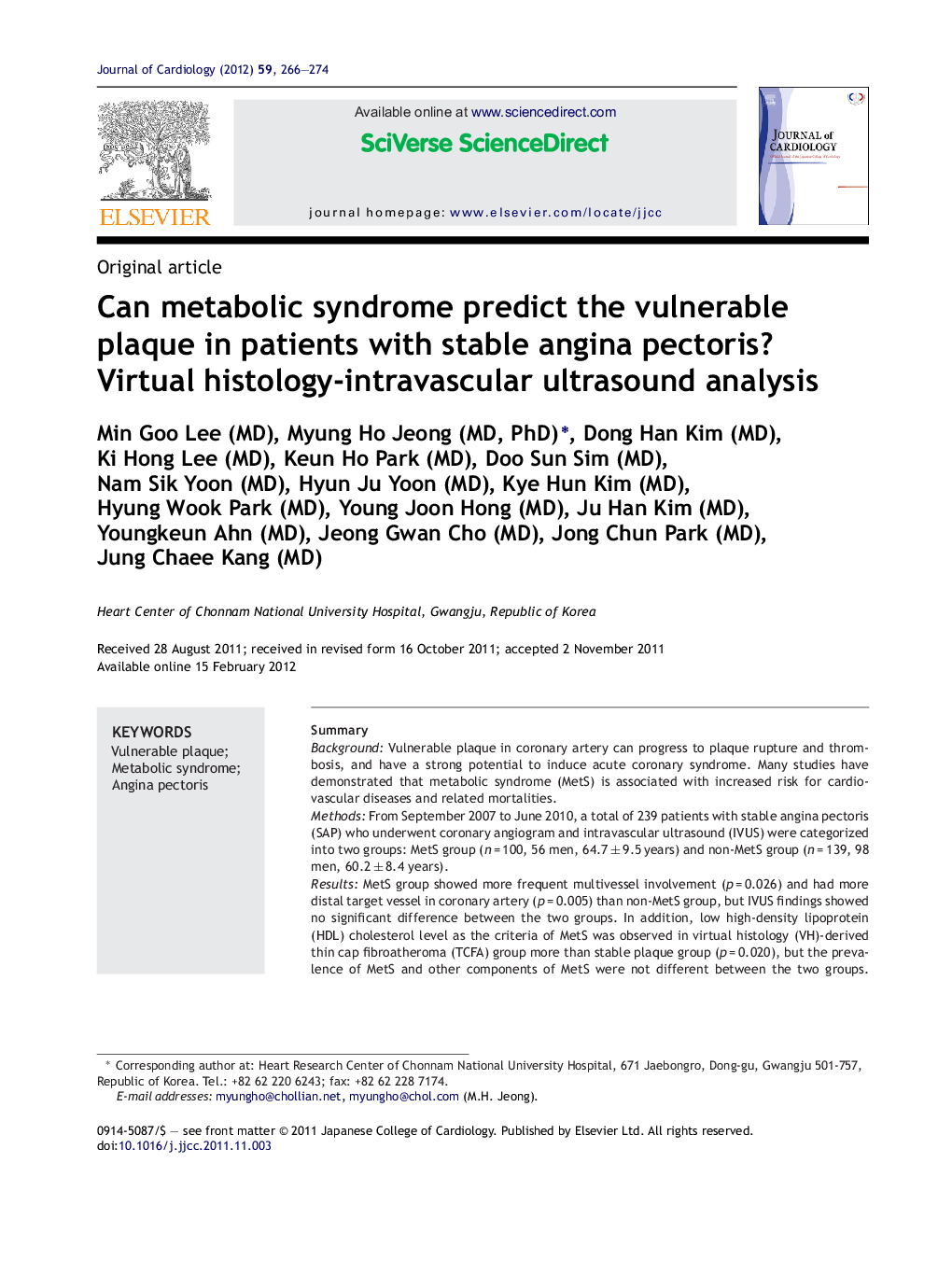| Article ID | Journal | Published Year | Pages | File Type |
|---|---|---|---|---|
| 2963513 | Journal of Cardiology | 2012 | 9 Pages |
SummaryBackgroundVulnerable plaque in coronary artery can progress to plaque rupture and thrombosis, and have a strong potential to induce acute coronary syndrome. Many studies have demonstrated that metabolic syndrome (MetS) is associated with increased risk for cardiovascular diseases and related mortalities.MethodsFrom September 2007 to June 2010, a total of 239 patients with stable angina pectoris (SAP) who underwent coronary angiogram and intravascular ultrasound (IVUS) were categorized into two groups: MetS group (n = 100, 56 men, 64.7 ± 9.5 years) and non-MetS group (n = 139, 98 men, 60.2 ± 8.4 years).ResultsMetS group showed more frequent multivessel involvement (p = 0.026) and had more distal target vessel in coronary artery (p = 0.005) than non-MetS group, but IVUS findings showed no significant difference between the two groups. In addition, low high-density lipoprotein (HDL) cholesterol level as the criteria of MetS was observed in virtual histology (VH)-derived thin cap fibroatheroma (TCFA) group more than stable plaque group (p = 0.020), but the prevalence of MetS and other components of MetS were not different between the two groups. Multivariate analysis using logistic regression for the presence of VH-derived TCFA showed that the independent predictor is the low HDL cholesterol level (odds ratio = 3.563, 95% confidence interval = 1.370–9.269, p = 0.009).ConclusionsThe presence of MetS was not associated with VH-derived TCFA in patients with SAP.
